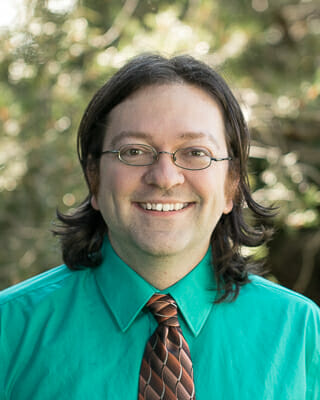
University budgets are tight, so how do you set aside funding for innovation? Here’s one strategy from the University of Virginia, which has issued 141 grants in a little over a decade to fund strategic projects at the institution.
In an earlier paper, we highlighted several distinct approaches institutions had taken to setting aside funds to pursue innovative, growth-minded strategies. Some advocated the rigorous discipline of setting aside a percentage of operational budget each year to allow the institution to take calculated risks on new projects (this infographic summarizes the approach); others suggested the power of a president’s network of donors who give specifically to an innovation fund.
One well-known variation on this second approach is the University of Virginia’s Jefferson Trust, which has issued 141 grants in a little over a decade to fund initiatives and programs of strategic interest to the institution. Though unique in its structure, much of UVA’s model is replicable for other institutions. To learn more, we reached out to Wayne Cozart, the executive director of the Jefferson Trust, in the following interview.
An Interview with Wayne Cozart
Daniel Fusch (Academic Impressions). Wayne, it’s wonderful to talk with you again. Can you tell me a little about the philosophy behind the Jefferson Trust, and how it is structured?
Wayne Cozart. We all know state institutions will never see the kind of support from state governments that they have seen in the past. We know publics must rely more on philanthropy. So the Trust was born out of necessity. In our case, after the dot.com bust in 2001, when the state of Virginia cut back appropriations severely, our dean of arts and sciences came to the alumni association and said, “If you give me $200,000, I can save 14 professorships.” That is what sparked the conversation. The board recognized the importance and came up with the idea of a venture-capital trust to fund strategic needs and initiatives that could not otherwise be funded.
They came up with the concept of a trust overseen by a board of trustees. The trustees could join the board with a $100,000 gift or more, and would have a 3-year term with an option to renew for a total of 6 years. Their role would be to continue to build the endowment and to take part in the decision making about where to allocate those funds. For all intents and purposes, the Trust operates as an interlocking directorate, an LLC of the alumni association. Over the past 11 years, we have raised the endowment $24 million, and as of last year, we have given out a total of 141 grants in support of all 11 schools, several student initiatives, and related foundation initiatives.
The mission is broad: We will consider a grant that will improve the quality of the institution and that might not be funded otherwise. It is venture capital. We are interested in (1) advancing the reputation of the institution, and (2) making sure the grants involve students as much as possible. (Thus, we look at grant applications from students as well.) We have an oversight committee that specifically looks at grant performance, failures, successes, and we have pulled back money twice over the past 10 years, for two grants that were lying fallow. Again, drawing on a venture-capital approach, we also use the oversight committee to look into what kinds of grants we should be looking at. What kind of grants are historically more successful for UVA?
VIDEO: A LOOK INSIDE THE JEFFERSON TRUST
Daniel Fusch. Would you tell me a little more about the trustees, and the role they play?
Wayne Cozart. Involvement of students and alumni is essential to UVA’s culture, so we started with a lot of trustees. I think what is especially powerful about the idea of a trust is that it is so different from unrestricted giving in terms of the impact for the donor. We have donors who have a phenomenal sense of value and accomplishment from this experience. Younger donors, especially, want to see where their money goes; the trust addresses that need in a real way. We are still dealing with unrestricted funds, but the donors are advising on the allocation of those funds. They see the needs, they interact with faculty, deans and students, and they can see the follow-through. After that six-year period, those philanthropically-inclined alumni who have served as trustees have a much deeper engagement with the institution.
Let me give you two examples:
- Last year, we had a grant that fell just outside the funding capabilities of the Jefferson Trust. We debated how to respond, whether to give a partial grant. The chair of the board, who is relatively young, said, “This is something that really excites me; I’m happy to pick up this grant and pay for it myself.” The trustee saw the value and wanted to invest; that is a powerful engagement with the institution.
- We have a mentoring program, in which we pair a trustee to each grant and they interact with the grant applicant, addressing any issues that may come up. We had one very young trustee who picked a particular grant and became so invested in it that he was placed on that organization’s board, to support the concept within that school on an ongoing basis.
Daniel Fusch. Those are powerful examples. Wayne, looking back, what has been the biggest surprise for you?
Wayne Cozart. The impact we’ve been able to have. The extent of it. In the venture capital world, one out of seven funded initiatives is going to be a great success. We’re probably at four out of five.
One of the questions we ask of any grant request is, “What is the plan for future funding? After this grant gets you off the ground, how will you fund your initiative?” We ask this at the start. The Mellon Foundation, others, have funded second rounds on many of these initiatives. In one of our most successful cases, the president approached us and requested $100,000 to start a big data initiative at the university. We granted the $100,000 and the president created a Data Science Institute. Over 160 faculty were involved in the data analytics. Within a year, a private donor gave $10 million to continue funding the institute. It’s now up to $16 million, and that brand new institute is ranked tenth in the country.
Daniel Fusch. What can other institutions learn from the success of the Trust?
Wayne Cozart. I know other institutions – James Madison University (JMU), for example – are beginning this process. Three takeaways I would suggest if you’re considering starting a trust like this:
- You have to be ready to fund the operating costs for the trust early on – because you have to ensure that the money given by the trustees goes into an endowment that is funding grants, not into an endowment that is supporting operating costs. We had the unusual case of that first endowment allocation, but if you don’t have this, you might consider a budget line item to support the trust initially. Or, as I suggested to JMU, find an individual donor who likes the concept and is willing to endow the operation because the concept is so important and the potential is so great.
- Make sure your trustees are diverse generationally. We have a full range of ages among the trustees. We have the ‘white-hairs,’ the younger 40-50 year olds who are just coming into the kind of income that now provides the opportunity for major philanthropy, and recently I have made sure that we have included the young heirs and heiresses who have family foundations and a full life ahead of them. Through the trust, they can winnow down their own personal philanthropic goals, investing in a particular area of the institution. This is allowing us to build a strong pipeline of donors over time.
- Put process in place to avoid the trust ‘going its own way,’ to make sure you aren’t approving initiatives that aren’t of long-term or strategic interest to the institution. In our case, we actually review all the grants we are considering with the president and the chief academic officer. It is a close partnership.
Daniel Fusch. Thanks, Wayne. It’s exciting to think about what the Jefferson Trust will achieve in the next 11 years!


